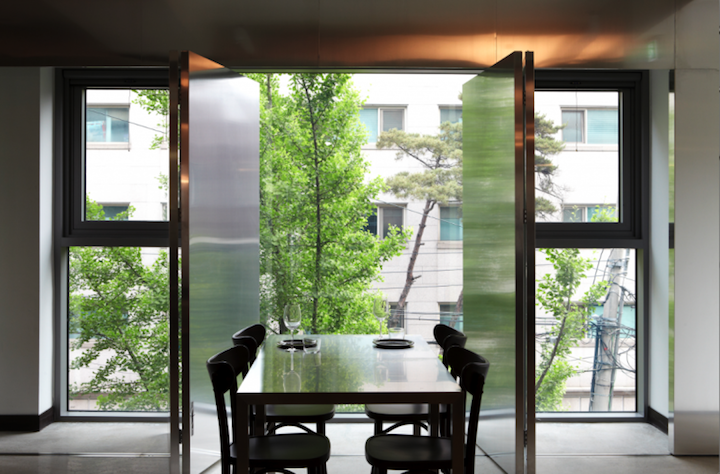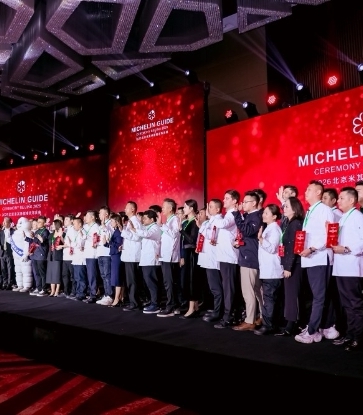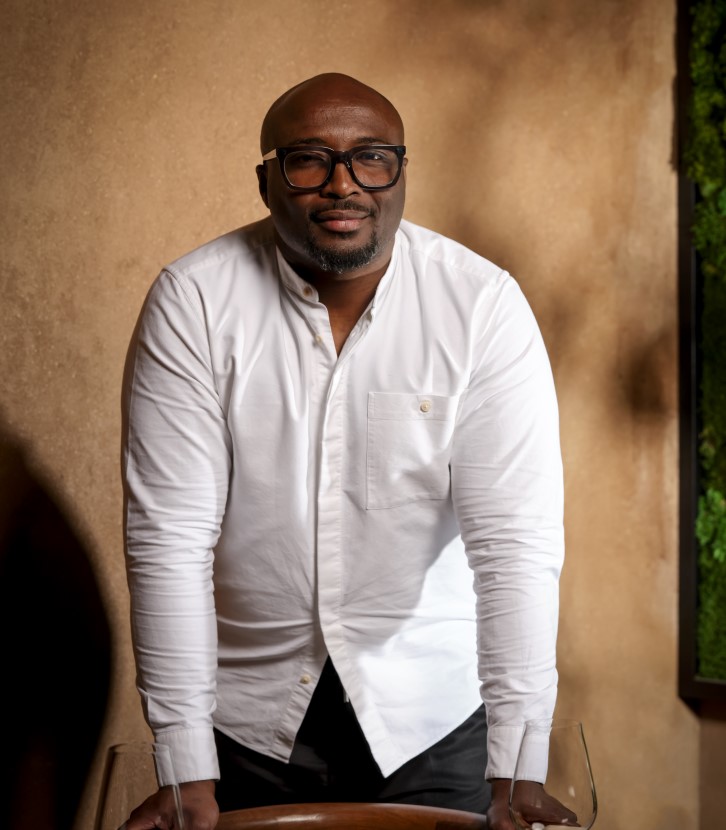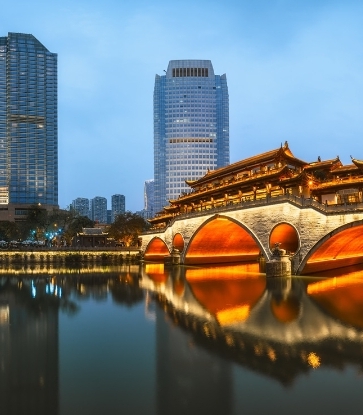Since growing up, his idea of authentic French cuisine revolved around deep-fried pork cutlets and hamburg steaks doused with sweet gravy and topped with a fried egg. So, from the moment he decided to go study abroad, he had only one destination in mind – France, where he would go on to study at the prestigious Le Cordon Bleu Paris. France opened his eyes to a whole new world of ingredients and flavours, introducing produce he had never seen before or familiar dishes with new elements added.
Yet, his path to being a chef was not easy. The first big obstacle he had to overcome was the language barrier. “My name is Lee Choong Hoo,” he replied when a classmate at Le Cordon Bleu asked him where he was from. He took things day by day, and slowly started to pick up the language. Wanting to learn the ins and outs of classic French cuisine outside of school, he apprenticed for six months at the then-two-Michelin-starred Restaurant Michel Rostang. At the end of his internship, he realised that modern French cuisine was the genre he wanted to pursue. Through a referral, he landed an apprenticeship at Le Chateaubriand by Iñaki Aizpitarte, a chef he greatly admired. Not long after, Aizpitarte made him an offer he could not refuse – to join the team at his newly-opening restaurant and wine bar Le Dauphin.
The chef and his team offer a regularly-changing prix fixe menu with ingredients he personally curates with the help of a local farmer. His food are his thoughts, his emotions and his memories of taste materialised on a plate.
We speak to Lee to find out more.

There was this one dish I had during my early days in Paris, and the experience of it was so shocking and memorable that I reinterpreted it years later and added it to my menu. The dish combined mackerel with beets, rose petals and raspberries.
The mackerel I grew up eating in my hometown of Jinju was either braised, covered in a deep red sauce with chunks of white radish, or simply salted and grilled. So, imagine my surprise when I saw beets and raspberries sitting on the plate with the same fish I grew up eating my whole life! Those differences were what made learning so much fun for me.
In Paris, one could cook haute cuisine at home using the ingredients from the local market. It was so different from Korea.
I was both shocked and happy. The food that I make is still perceived as “too esoteric” for the general Korean palate. It often feels like I have a few too many barriers to break down before the people warm up to my food. I understand, though, because I felt the same way when I experienced French cuisine for the first time. So, receiving the Michelin star (for Zero Complex) was a boost of confidence I needed right when I needed it. As the youngest chef, I felt humbled standing on the stage with all the other great chefs.
When we first opened, everyone had something to say about it. When people look at stainless steel surfaces, they immediately think of refrigerators and the word “cold.” People come here expecting to see warm wooden surfaces, expecting to be served foie gras and soup, but they see none of that. Whatever preconception they had about us is shattered the moment they walk in.
Food-wise, what did you have in mind when you decided to open the restaurant?
I wanted to create dishes that were edible interpretations of my thoughts and feelings. And that’s what I did; I reflected on the six years I spent in Paris and drew inspiration from my own experience. In hindsight, my food in the early days of Zero Complex was much bolder.
At the moment, I am experimenting with flavours that are exciting yet familiar. For instance, I am Korean and I grew up eating kimchi-jjigae my whole life. My palate is conditioned to appreciate a certain level of sourness in dishes, so I try to apply that taste memory to the French dishes I create in the kitchen. The outcome will be French, but the flavours will trigger a taste memory in the Korean diners to think, ‘Hey, I feel like I’ve had this somewhere before.’

Absolutely. The food I am making right now are my own takes on some of the best dishes I experienced in France. From the start, my goal was to make food that is fun, food that excites people.
As a chef, what is your number one priority?
Ingredients. I have a serious obsession with fresh produce. We get all of our produce from a farmer who grows all the vegetables we use at the restaurant. She used to work with fine dining restaurants in the United States and is highly experienced and knowledgeable.
I visit the farm in Yeoju every Monday. If I go to the market and say to the vendor, “What is wrong with the taste of this carrot?” everyone would think I am crazy. But working closely with the very person who grows all the fresh produce I cook with means there is a mutual understanding and constant communication. We discuss ideas all the time and that is the key to producing the best ingredients. For me, visiting the farm every week constitutes a huge part of the creative process.

Why this obsession with ingredients?
A great-tasting carrot is amazing just on its own. Some diners say they enjoy watching the way I interpret the ingredients. For me, cooking is pretty straightforward. I use the best ingredients I can find to make the kind of food I want to eat. Of course, someone who can create something tasty out of ordinary ingredients in the fridge is also a good cook. But what makes a great chef is his or her ability to think outside the box and use ingredients that are a little out of the ordinary. But that’s just me and I’m not sure if there’s a right or wrong way to cook good food.
Where do you draw inspiration from?
My friends call me “the human shark.” There isn’t anything I will not eat with gusto. Naturally, I’m often inspired by what I eat. For instance, the endive and caramel mousse dish we serve at the restaurant was put together by sheer chance. I was in the kitchen one day and there was a bowl of endives and some caramel sauce we had prepared for dessert. I munched on an endive leaf and went on to taste the caramel sauce and the flavor combination was amazing. That’s how I often get ideas.
I rely a lot on my memory to create food. A few days ago, I ordered kimchi-jjigae at a restaurant. The type of kimchi-jjigae that I like is a lighter version without too much pork or fatty protein. The jjigae I ordered that day had a noticeable film of oil floating on top and it looked really greasy. I tasted it and was surprised to find it didn’t taste oily at all. Taste memory like that helps me gauge the amount of fat I can add to broths and sauces without going overboard.
What is your favourite food?
My mom’s tteokguk (rice cake soup). She wanted to make something special for her son visiting home for the first time in a while, so she made tteokguk with every ingredient she could get her hands on. The soup had beef in it as well as a bunch of seafood. It was so good. That is the kind of food I really enjoy eating – food made with love that makes you feel all warm inside. That is why memory is such an important source of inspiration for me.
She doesn’t really like my food (laughs). Her taste buds are not used to Western flavours; she says the herbs taste like perfume.
I believe that taste buds can be conditioned, just like everything else in life. If you experience something enough times, your brain remembers it. Your taste buds can warm up to flavours you didn’t enjoy before. My mom just needs more practice.
Is there a dish you have yet to try making that you really want to make in the future?
Like any other chef, I am always trying to be better at what I do. I personally want to create the simplest dish in the world using the best produce. And I want it to taste out of this world.






















